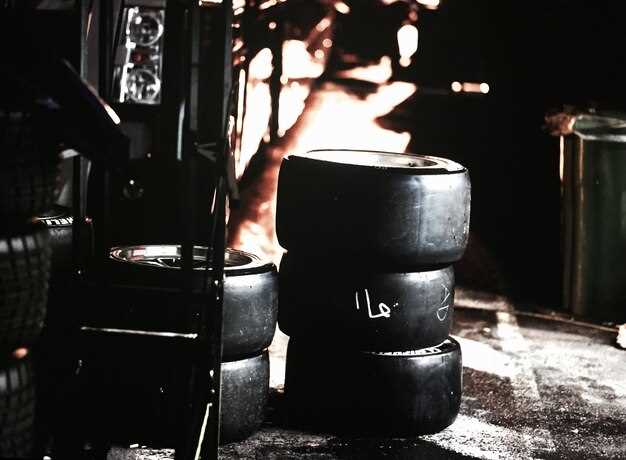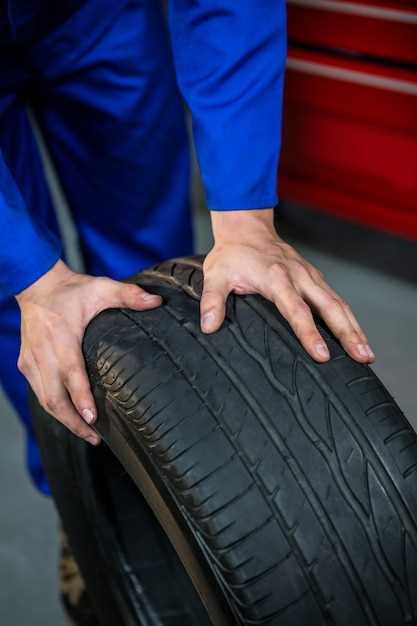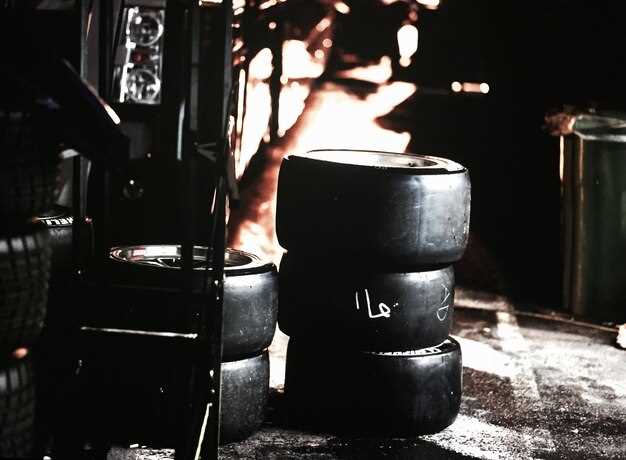Choosing the right tire brand can dramatically enhance your driving experience. Michelin and Bridgestone top the list of global tire manufacturers, and selecting between the two can come down to specific needs and preferences. While both brands offer exceptional quality, understanding the differences can help make a more informed decision.
Michelin is well-regarded for its focus on performance and longevity. Their famous Pilot Sport series, known for exceptional grip and handling in both dry and wet conditions, makes them a preferred choice for performance-oriented drivers. Moreover, Michelin’s commitment to innovation is evident in its energy-efficient tire technologies, aimed at reducing fuel consumption without compromising on safety or performance.
Bridgestone, on the other hand, brings a strong suit in durability and all-season performance. With the Blizzak series, Bridgestone has solidified its reputation as a leader in winter tire technology, providing optimal traction and control in icy and snowy conditions. Additionally, Bridgestone’s DriveGuard line assures drivers peace of mind with run-flat capabilities, minimizing risks associated with roadside emergencies.
Pricing is another crucial aspect to consider. Michelin typically commands a premium price, justified by advanced technology and longer tread life, whereas Bridgestone often offers a wider range of affordable options, especially in the all-season category. Understanding these nuances between Michelin and Bridgestone allows for a more tailored tire selection, ensuring that your choice aligns perfectly with your driving habits and environmental conditions.
Performance and Quality Comparison

Choose Michelin for exceptional wet and dry performance. Their tires often feature innovative tread designs and advanced rubber compounds, providing superior grip and handling in various conditions. For instance, the Michelin Pilot Sport range is celebrated for its dynamic handling and responsive braking, making it ideal for sports or high-performance vehicles.
If you prioritize durability and cost-effectiveness, consider Bridgestone. Known for their wear resistance, Bridgestone tires, like the Dueler or Turanza lines, are engineered to provide long-lasting performance. They maintain stability and comfort over thousands of miles, ensuring a smooth ride for everyday driving.
| Feature | Michelin | Bridgestone |
|---|---|---|
| Wet Performance | Outstanding | Good |
| Dry Performance | Excellent | Very Good |
| Durability | High | Very High |
| Comfort | Very Comfortable | Comfortable |
| Price Range | Higher | More Affordable |
While Michelin often stands out in premium performance sectors, Bridgestone offers robust quality with a focus on longevity and value. Select based on specific vehicle needs and driving conditions. Align your choice with the ideal combination of performance and longevity for your driving style.
Tread Life and Durability
For drivers seeking tyres with exceptional longevity, Michelin stands out with its focus on advanced materials and innovative design. Michelin’s patented EverGrip technology ensures prolonged tread life, providing consistent performance even as the tyre wears down. Tests indicate that Michelin tyres can last up to 15% longer than some competing brands, making them a wise choice for high-mileage drivers.
Bridgestone, however, competes closely with an emphasis on durability. The company’s use of Dual Layer Tread technology promotes even wear over time, reducing the risk of premature replacements. Bridgestone tyres often incorporate NanoPro-Tech, a compound designed to enhance durability and resistance to abrasions, ideal for rough or variable road conditions.
For urban commuters, Michelin’s all-weather performance and longevity offer a balance of safety and endurance. In contrast, Bridgestone excels in environments where durability is paramount, such as rural or unpaved roads. Both brands deliver formidable options, but assessing your driving conditions and needs will guide you to the best choice.
Handling in Wet and Dry Conditions
Choose Michelin for outstanding wet handling, as their tires feature advanced silica compounds that enhance grip on wet roads. This ensures drivers maintain control even during heavy rain, significantly reducing the risk of hydroplaning. The added siping also expels water swiftly from the tire surface, further boosting traction.
For dry conditions, Bridgestone shines with its innovative contact patch technology that maximizes road contact. This results in superior stability and responsiveness while maneuvering at high speeds. The asymmetrical tread design efficiently distributes the heat, preserving the tire’s integrity and reducing wear.
- Michelin (Wet):
- Silica compounds improve wet grip
- Reduced hydroplaning risk with effective water expulsion
- Excellent control in heavy rainfall
- Bridgestone (Dry):
- Optimal contact patch for enhanced stability
- Asymmetrical tread offers precise cornering
- Heat management increases tire lifespan
When balancing both conditions, Michelin tires adeptly handle varied weather, while Bridgestone stands out on dry, performance-focused drives. Each brand employs specific technologies, making them suitable for different driver needs. Ultimately, it’s essential to consider climate and driving style when selecting the right tires.
Fuel Efficiency and Rolling Resistance
Prioritize Michelin if fuel efficiency is your concern. Michelin’s innovative tire technology reduces rolling resistance, which directly translates to improved fuel economy. For instance, the Michelin Energy Saver A/S is specifically designed to lower fuel consumption by minimizing energy loss as the tire rolls. This model has been reported to enhance fuel efficiency by up to 8%, making it a smart choice for eco-conscious drivers.
In contrast, Bridgestone also offers products aiming to reduce rolling resistance, but their approach emphasizes balance. The Bridgestone Ecopia series, while enhancing fuel efficiency, focuses on a harmonious blend of safety and performance. Bridgestone’s NanoPro-Tech compound ensures a lower rolling resistance, yet some users report slightly less fuel savings compared to Michelin.
Consider seasonal driving conditions and tire longevity. Michelin tires often excel in varied weather due to their advanced rubber compounds, thus offering longer life and consistent performance over time. Bridgestone, known for versatility, provides substantial options for all-season and specific weather conditions, ensuring adequate fuel savings without compromising traction.
When making a choice, factor in your driving habits and regional climate. If maximum fuel economy is your goal and your driving conditions are stable, Michelin may offer an edge. However, for diverse conditions with a need for balance in safety and efficiency, Bridgestone is a reliable alternative. Assess both brands’ offerings critically, keeping in mind their distinct advantages regarding fuel efficiency and rolling resistance.
Price and Consumer Perception

Explore options with both Michelin and Bridgestone carefully if price plays a significant role in your decision-making process. Bridgestone often provides budget-friendly alternatives without compromising on basic quality, making them a popular choice among cost-conscious consumers. For instance, Bridgestone’s Ecopia line offers fuel efficiency and longevity at a competitive price point, appealing to those looking for value without excessive expenditure.
On the other hand, Michelin positions itself as a premium brand, frequently praised for advanced technology and exceptional performance. The higher cost of Michelin tires aligns with their reputation for durability and superior handling, especially under challenging driving conditions. For example, the Michelin Pilot Sport series consistently receives accolades for enhancing driving precision, justifying the investment for performance enthusiasts.
Consumers often perceive Michelin as a premium option, focusing on innovation and extended lifespan, which can result in long-term savings despite the initial higher purchase price. In contrast, Bridgestone attracts value-seekers who prioritize affordability and efficiency. When selecting tires, consider how each brand aligns with your driving needs, budget constraints, and desired investment in quality. Ultimately, the choice between Michelin and Bridgestone will hinge upon balancing short-term costs with long-term performance benefits.
Cost Analysis Across Product Lines
Choosing between Michelin and Bridgestone often comes down to pricing, where Bridgestone typically offers a more cost-effective range. For budget-conscious drivers seeking reliable performance, Bridgestone’s Ecopia series stands out with competitive pricing starting at around $70 per tire, offering significant value, especially for compact and mid-size vehicles.
Michelin, renowned for its premium positioning, delivers high-end options such as the Michelin Pilot Sport 4, priced from $150 per tire, targeting performance enthusiasts who prioritize handling and longevity. However, Michelin offers more affordable lines like the Defender T+H, starting at approximately $100, balancing quality and cost for family sedans and crossovers.
When considering winter performance, Bridgestone’s Blizzak tires offer excellent snow traction at prices ranging from $100 to $180, making them a popular choice in snowy regions. Alternatively, Michelin’s X-Ice series, with prices starting near $120, provides unmatched durability and grip, preferred by drivers in harsher climates.
Investing in durable and long-lasting tires can offset initial costs, and Michelin often outranks Bridgestone in longevity. According to user reviews, Michelin tires can last up to 15,000 miles longer, which reduces the overall cost per mile. However, Bridgestone’s focus on extensive warranties and satisfaction guarantees presents a compelling argument for those cautious about upfront expenses.
Considerations should also include fuel efficiency. Bridgestone’s fuel-saving designs tend to be slightly less expensive but offer similar fuel economy gains compared to Michelin’s energy-efficient offerings. Over the tire’s lifespan, this can lead to savings, which should factor into the decision-making process for environmentally conscious drivers.
Ultimately, the choice may best depend on a balance between your budget, driving needs, and preference for longevity versus upfront cost savings, making both Michelin and Bridgestone suitable for distinct consumer segments.
Customer Satisfaction and Reviews
Michelin consistently sets high standards for customer satisfaction by offering reliable traction and long-lasting performance. Consumers highlight the brand’s commitment to quality, often noting the smooth ride and excellent handling. Many reviews praise Michelin’s energy-efficient tire options that contribute to better fuel economy.
Bridgestone, on the other hand, garners positive feedback for its innovative tire technology and diverse product range. Customers appreciate the durability and superior grip, especially under challenging weather conditions. The brand’s dedication to safety and comfort is frequently reflected in positive reviews, making it a popular choice for cautious drivers.
When selecting between the two, consider the specific driving needs and local climate. Michelin tends to appeal to those prioritizing eco-friendly options and top-tier performance, while Bridgestone might cater more to drivers looking for versatility and robust technology. Both brands maintain high customer satisfaction overall, with loyal followers backing their preferred choice based on these distinct strengths.
Resale Value and Market Position
Choose Michelin if you prioritize resale value. Their tires consistently demonstrate high demand in secondary markets, largely due to their robust reputation and uncompromising quality. Buyers trust Michelin’s longevity, translating to better resale prices. However, for frequent upgraders or those inclined towards innovative technology, Bridgestone offers enticing options. They lead in integrating cutting-edge solutions, attracting tech-savvy buyers who often seek the latest models.
The table below provides a comparison of key factors that affect resale value and market position for both brands:
| Factor | Michelin | Bridgestone |
|---|---|---|
| Consumer Trust | High | Moderate |
| Technological Advancements | Stable | High |
| Secondary Market Demand | Strong | Moderate |
| Longevity | Exceptional | Reliable |
Michelin’s sustained excellence keeps it a preferred choice for buyers focusing on longevity and reliability. By contrast, Bridgestone’s continuous innovation excites those constantly seeking the latest enhancements. Assess your needs and align them with what each brand excels in to maximize your investment’s value over time.
Warranty and Service Options
Select Michelin for their exceptional warranty program, which typically covers up to 6 years, offering unlimited miles in the first year with a no-charge replacement policy. After the first year, Michelin offers a prorated coverage based on the remaining tread depth, giving peace of mind and ensuring longevity in your tire investment.
Meanwhile, Bridgestone provides a solid warranty package with up to 5 years of coverage. Bridgestone’s Buy & Try Guarantee allows you to return tires within 90 days if unsatisfied, reflecting commitment to customer satisfaction. Additionally, the brand offers free tire replacement during the first three years if the tire fails due to a road hazard, excluding nails or glass.
Both brands enhance their offerings with strong customer service networks, ensuring expert support and assistance when you need it most. Michelin’s dedicated service centers and online support make it easy to address any tire concerns. Bridgestone matches this with comprehensive services, boasting an extensive network of authorized dealers and service partners ready to assist.
In choosing between Michelin and Bridgestone, consider the detailed warranty specifics and the level of service quality that aligns with your needs. Both provide robust service options, but your preference for the length of warranty and additional benefits might guide your decision.
Q&A:

How does Michelin’s tire technology compare to Bridgestone’s in terms of innovation?
Michelin has consistently focused on pioneering tire technologies that enhance safety, durability, and performance. One of their notable innovations is the development of the MICHELIN CrossClimate tire, which combines the characteristics of summer and winter tires. Bridgestone, on the other hand, has significantly invested in developing Ecopia tires that optimize rolling resistance to improve fuel efficiency. Both companies prioritize innovation, but their approaches vary, with Michelin focusing on all-season adaptability and Bridgestone centering on eco-friendliness and sustainability.
Which brand offers better value for money in terms of tire longevity and price?
Tire longevity often depends on driving conditions and maintenance practices, but generally, Michelin is praised for its long-lasting tire models. Though typically more expensive upfront, Michelin tires may offer better long-term value due to their durability. Bridgestone, while competitively priced, provides a range of offerings that might be more budget-friendly but may not always match Michelin’s longevity. Ultimately, the choice between the two could depend on balancing initial cost with expected tire lifespan.
What sustainability initiatives are Michelin and Bridgestone implementing in their production processes?
Both Michelin and Bridgestone have made strides in incorporating sustainability into their production processes. Michelin aims to achieve a fully sustainable tire by 2050, with initiatives like reducing raw material usage and improving energy efficiency in manufacturing. Bridgestone is committed to carbon neutrality by 2050 and has introduced circular economy practices, such as recycling end-of-life tires. These efforts highlight both companies’ dedication to environmental responsibility in their operations.
Are there notable differences in the performance of Michelin and Bridgestone tires in different weather conditions?
Yes, there are some differences in performance under various weather conditions. Michelin’s tires, especially their all-season models like the CrossClimate, are designed to deliver reliable traction in dry, wet, and light snowy conditions, making them versatile for changing seasons. Bridgestone excels in producing winter tires, such as the Blizzak series, which are specifically optimized for harsh winter conditions and offer superior grip on icy and snowy roads. Thus, the choice may depend on the predominant weather conditions you drive in.
How do the customer service experiences compare between Michelin and Bridgestone?
Customer service quality can be subjective and vary from case to case, but both Michelin and Bridgestone are known for their customer-centric approaches. Michelin often receives praise for its comprehensive warranty programs and responsive support team. Bridgestone also maintains a strong reputation for customer satisfaction, offering robust warranties and helpful service. The customer experience can largely depend on the dealer and region, so it might be beneficial to read local customer reviews for more specific insights.
